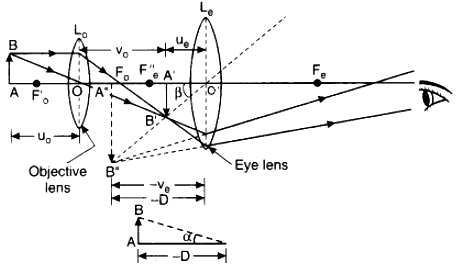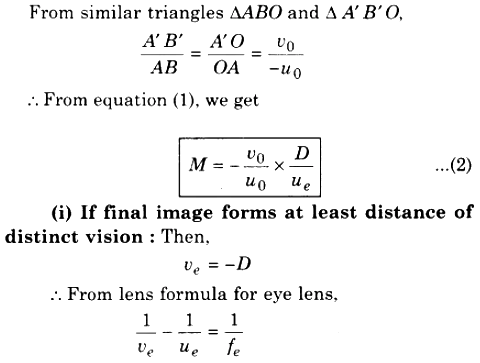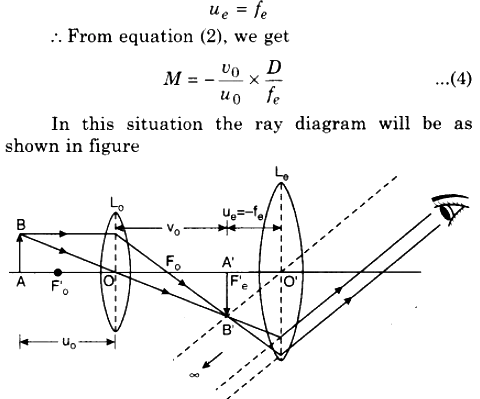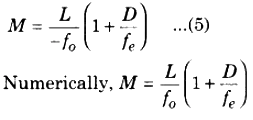Compound Microscope:
Compound microscope is an optical instrument which is used to see highly magnified images of very fine particles and very tiny objects.
Construction: It consists of two convex lenses. One lens which is of short focal length and small aperture and remains towards the object, is called ‘object lens’ or ‘field lens’. Second lens which is of larger focal length and aperture and remains towards eye is called ‘eye lens’. Both the lenses are fitted coaxially at both ends of a tube and the distance between these lenses can be changed by rack and pinion method.
Adjustment and Formation of Image: In adjustment process, eye lens or eye pieces is adjusted first. For this, eye piece is moved forward or backward upto such extent that cross wire should be seen clearly. Now the object is placed infront of field lens and it is moved to adjust in such a way that the clear image of the object would be seen. In this situation inverted, larger and virtual image of the object forms on cross-wire. The ray diagram of formation of image is given in figure.

AB is a small object and its inverted, real and larger image A’ B’ is formed by objective lens. This image acts as virtual object for eye lens, therefore it is moved forward or backward such that the image A’ B’ may lie within the focal length of the eye piece. The image A’ B’ acts as an object for the eye piece which essentially acts like a simple microscope. The eye piece forms a virtual and magnified final image A”B” of the object AB. Clearly, the final image A”B” is inverted with respect to the object A
Magnifying Power: The magnifying power of compound microscope is defined as under;



(ii) If final image is formed at infinity: The final image will form at infinity only when the image A’ B’ formed by objective lens be at the first focus F’ of eye lens. Therefore,

Object AB is very close to first focus of objective lens, therefore,
AO = Fo'O or uo = fo
Similarly, the intermediate image A’ B’ is very near to eye lens. Therefore,
v0 = OA’ ≈ OO’ ≈ Length of microscope (L)
or v0 ≈ L
From equation (3), the magnifying power,
